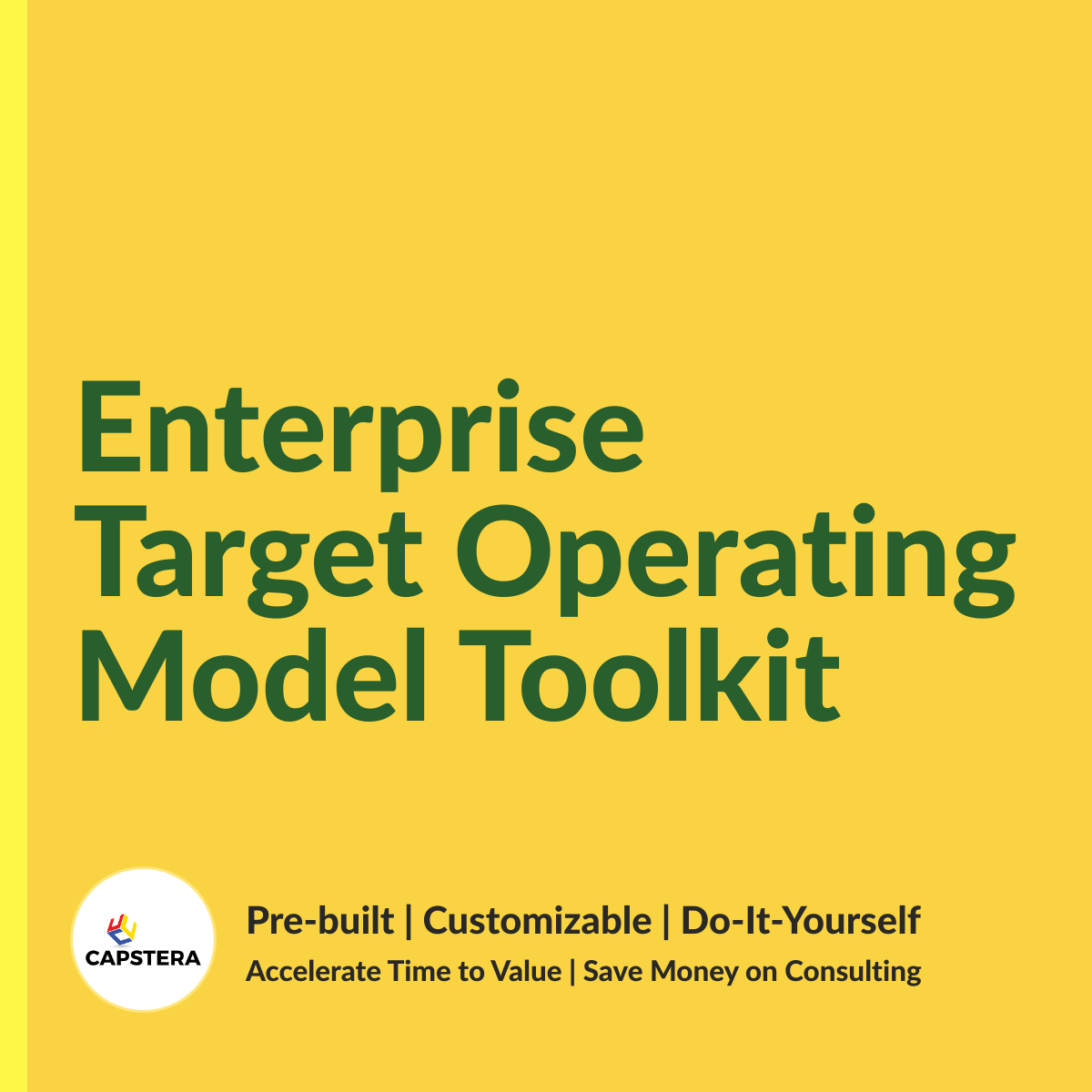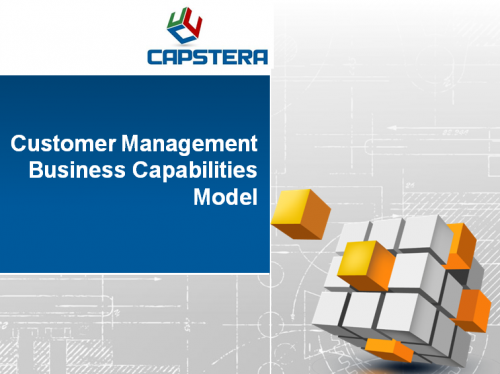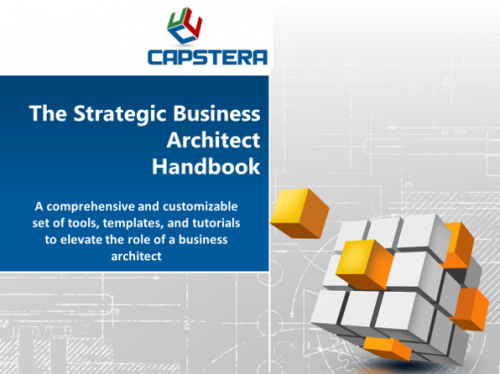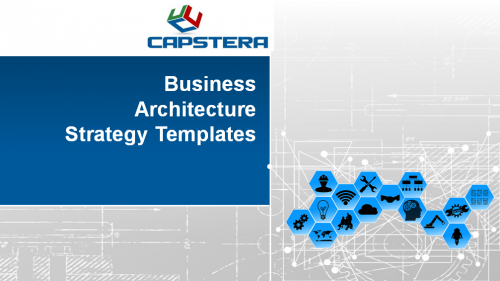Enterprise Target Operating Model Toolkit
Price range: U.S. $999 through U.S. $2,999
Introducing our all-encompassing Enterprise Target Operating Model Toolkit, designed to drive your organization’s transformation journey from ideation to execution. In today’s hyper-competitive business landscape, having a well-defined operating model isn’t just desirable—it’s indispensable. Our Target Operating Model toolkit is your one-stop solution, carefully crafted to meet the nuanced needs of businesses seeking to adapt and lead in their industries.
(Note: The Enterprise Target Operating Model Toolkit is a digital product; hence, we do not accept returns or issue refunds. Please read the description carefully before making a purchase.)
The ETOM toolkit is an amalgamation of meticulous research, field-tested strategies, and actionable insights geared toward optimizing your business processes, aligning your strategic objectives, and fostering an agile and resilient organizational culture. It includes a range of deliverables—from comprehensive e-book content to PowerPoint slides complete with speaker notes—making it a robust resource for decision-makers at all levels.
Enterprise Target Operating Model Toolkit: List of Deliverables
The Enterprise Target Operating Model Toolkit is a treasure trove of pre-built and customizable deliverables that can be tailored to each enterprise’s needs.
Important: This is a generic set of templates, questionnaires, and deliverables. It will require extensive customization based on your firm’s unique needs. Please understand the limitations of an off-the-shelf toolkit. While we provide the current state-capture questionnaires/templates and target state-capture templates/questionnaires, your team must still define the synthesis, strategy, and transformation plans. Our ETOM deliverables may be similar to golf clubs – not everyone becomes a Woods or a Nicklaus.
| Context/Background/Briefings |
| Target Operating Model Overview |
| Leveraging Target Operating Models to Drive Business Transformation |
| Levers of a Target Operating Model |
| Business Architecture and Target Operating Model |
| TOM-Driven Transformation – A Business Fable |
| Impact of AI on TOM |
| Target Operating Model – FAQs |
| TOM – Stakeholder Inputs |
| Executive Questionnaire for TOM |
| Vendor and Supplier Inputs |
| Customer Questionnaire for TOM |
| Employee Inputs for TOM |
| Project Planning |
| Cost to Define and Implement TOM |
| Internal Proposal for Defining and Implementing a TOM |
| Notional Project Plan for TOM |
| Sample Statement of Work |
| Target Operating Model – Best Practices |
| Target Operating Model Inputs List |
| TOM – Pitfalls to Avoid |
| Assessment/Analysis |
| Strategy Audit Questionnaire |
| Current State Functional Assessment Template |
| Capital Structure and Financial Management Assessment |
| Competitive Analysis Template |
| Data Assessment Template |
| Target State Visioning |
| Customer Management Target State Vision |
| Data Management Target State Vision |
| Finance and Accounting Target State Vision |
| Human Resources Target Vision |
| Information Technology Target State Vision |
| Legal, Risk, and Compliance Target State Vision |
| Macro Factors and Markets Vision |
| Manufacturing Target State Vision |
| Marketing and Sales Target State Vision |
| R&D Target State Vision |
| Regulatory and Compliance Requirements |
| Strategic Objectives |
| Supply Chain Target State Vision |
| Target State Vision Template |
| Design |
| Operating Model Archetypes |
| Operating Model Archetypes Comparison Table |
| Which TOM is Suitable for Your Enterprise? |
| Agile Operating Model – Design Considerations |
| Customer-Centric Operating Model – Design Considerations |
| Digital Operating Model – Design Considerations |
| Divisional Operating Model – Design Considerations |
| Functional Operating Model – Design Considerations |
| Hybrid Operating Model – Design Considerations |
| Network Operating Model – Design Considerations |
| Deliverables/Reports Templates |
| Change Management Plan Template |
| Target Operating Model Report (SAMPLE Co) |
| Target Operating Model Executive Report Template |
| Sample Target Operating Model – A Fable |
A highlight of the Target Operating Model Toolkit is its focus on both macro and micro-level aspects of TOM. Whether mastering the art of stakeholder buy-in or navigating the complexities of advanced data analytics, this toolkit has it covered. Tailored to be adaptable, it accommodates a broad spectrum of functions including but not limited to R&D, Marketing, HR, and Finance.
Furthermore, it employs a suite of proven tools and methodologies, real-world case studies, and examples that lend a practical dimension to theoretical concepts. Utilize our customizable templates to suit your organization’s specific needs and nuances.
Choose excellence, choose innovation, and choose a seamless transformation journey. With our Target Operating Model Toolkit, you’re not just buying a product but investing in a future of endless possibilities.
Of course, your company can hire an expensive consulting company and pay hundreds of thousands of dollars (if not millions). Still, a pre-built, customizable, and comprehensive set of deliverables will help accelerate the TOM blueprinting process.
A Brief Overview of Enterprise Target Operating Model:
An Enterprise Target Operating Model (TOM) is a blueprint that defines how an organization operates across various domains to achieve its strategic objectives. It articulates the core components—processes, governance structures, people, and technology—that must be in place to execute business strategy effectively. TOM is a strategic alignment tool that harmonizes various organizational elements into a singular vision.
The importance of TOM is manifold. Companies are often pulled in different directions in a rapidly evolving business landscape by competing priorities, regulations, and stakeholder expectations. A well-defined TOM provides clarity and focus, ensuring that every part of the organization moves cohesively towards common goals. It helps identify gaps, redundancies, and inefficiencies in the existing operating model, aiding in informed decision-making.
Defining TOM is a multifaceted exercise that involves rigorous analysis and stakeholder engagement. Companies must assess their current state through SWOT analysis, competitor benchmarking, and employee and customer feedback. This is followed by envisioning a future state aligned with strategic objectives. Gap analysis then helps in understanding the transition required. A comprehensive TOM will typically cover areas like governance, processes, technology stack, talent management, and financial models.
The benefits of a well-executed TOM are extensive. It enhances operational efficiency, reduces costs, improves customer satisfaction, and prepares the organization for future challenges. TOM is a strategic and operational necessity for achieving sustainable growth and competitiveness.
And here are some frequently asked questions about the Enterprise Target Operating Model Toolkit.
- What is a Target Operating Model, and why is it important?
A Target Operating Model (TOM) is a conceptual blueprint defining how an organization delivers value to its stakeholders. It is essential because it aligns strategy, processes, technology, and people, creating a roadmap for optimized performance and long-term success. - How long does assessing, envisioning, defining, and implementing a Target Operating Model take?
The time to develop and implement a TOM can vary widely, ranging from 6-18 months, depending on the complexity and scale of your organization. The process involves several phases, including assessment, envisioning, planning, and execution, each with its own time requirements. - How much does implementing a Target Operating Model in a medium and large enterprise cost?
The cost can vary significantly based on the scope and complexity of the transformation. For medium enterprises, costs could start at several hundred thousand dollars, while large enterprises might invest millions. Factors like consultant fees, technology investments, and training also contribute to the cost. - Can we define and implement a TOM without consultants?
Yes, defining and implementing a TOM without external consultants is possible. However, having expert guidance can accelerate the process and mitigate risks. Before making this decision, it’s crucial to weigh the pros and cons, such as internal expertise and the project’s complexity. - Why should we buy the Enterprise Target Operating Model Toolkit?
The Toolkit offers a structured, comprehensive guide to developing and implementing a TOM, saving you time and resources. It includes templates, best practices, and case studies, providing a one-stop solution for your enterprise transformation needs. However, please realize while we provide all the tools, templates, tutorials, and questionnaires, you will have to do the intellectual heavy lifting. Our team has put in over a hundred hours in defining these inputs.
Provisos:
- We cannot accept refunds or returns as the products are digital deliverables.
- Please realize that a generic set of templates, questionnaires, and guides may or may not be entirely applicable in some circumstances.
- We do not offer any implied or explicit warranties, and it is sold on an as-is basis.
- The sale does not include customization or implementation help.
- Please review our standard Ecommerce Store Terms and Conditions.
Need Customization Help?
Enterprise Target Operating Model Toolkit
Price range: U.S. $999 through U.S. $2,999





